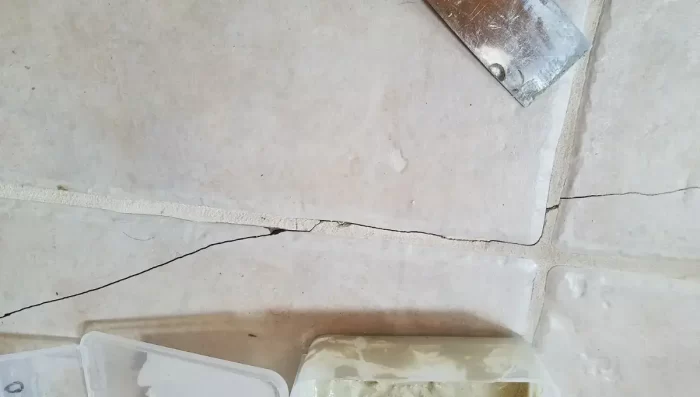Are you looking for some basic and practical way how to repair cracks on floor tile? if you have no idea what and how to do. This article can help you.
It feels fantastic to keep everything flawless from ceiling to floor, and having your house built is like realizing a dream. Everyone in the house pays attention to details, whether it’s getting the ceiling carved or installing the nicest tiles.
However, the roof of the house might occasionally develop a crack for unknown reasons, as can the tiles. Due to the constant accumulation of dust and debris in the cracks, it is neither attractive nor useful for cleaning the house. These cracked tiles occasionally even have the potential to be harmful.
The dropping of heavy objects occasionally causes the tiles to crack. Frequently, improperly applied floor or wall tiles will also shatter.
You do not need to repair a few cracked tiles on your floor or counter if they happened as a result of regular use or falling from a heavy object. If the tile isn’t too badly damaged or you don’t want to pay the money to replace it, you can fix it yourself.
Use epoxy to patch any tiny cracks in the tile, or try wood glue and nail polish. Replace the tile, however, if it is severely broken and beyond repair.
Replacing a broken tile costs a lot of money. If in this case the tiles are only slightly broken, you can fix it yourself. Yes! We are going to provide you with some tips in this article with help on how to repair cracks on floor tile? You can fix the tiles quickly and easily. Read on to find out how.
- List of the 6 best way to repair cracks on floor tile
- Required tools and materials
- Benefits of Ceramic Tile Repair Kit
- reasons why tile floors crack?
- How To Determine The Quality Of ceramic Floor Tile?
- fAQ about how to repair cracks on floor tile?
- Tell Us In The Comments Your Opinion how to repair cracks on floor tile?
List of the 6 best way to repair cracks on floor tile
1. first, clean the tiles
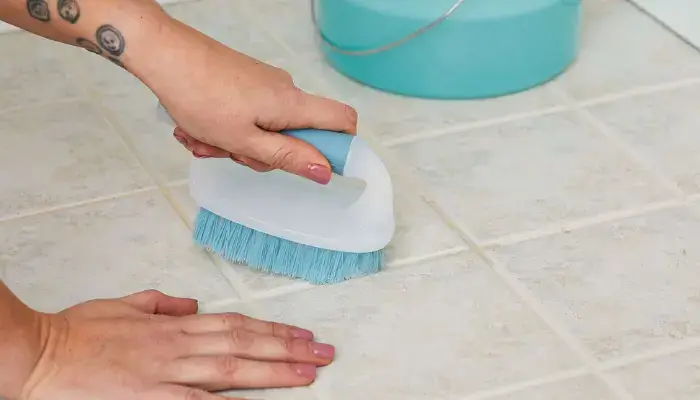
Cleaning the broken tiles thoroughly is the first step in repairing damaged tiles. To begin, wash it with water. Cleaning it with baking soda or rubbing alcohol is recommended after cleaning it with water. To keep the epoxy liquid from adhering, clean the tiles to get rid of any dust and grime. After cleaning, let it air dry for ten to fifteen minutes.
2. Pour the epoxy on a piece of cardboard to mix it.
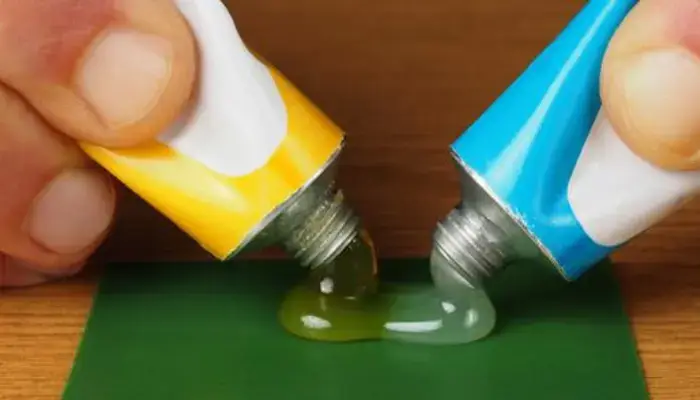
Epoxy is actually a composition that hardens. Both of the cracked tile pieces can be “pasted” with it. While 1-part epoxy kits are also offered, 2-part kits are of higher quality and maintain the attachment of fractured tiles for a longer period of time.
If your local hardware store doesn’t carry epoxy, check another one. Buy it from a home improvement store if the answer is yes.
About 2 tablespoons (43 g) of the epoxy mixture from each container should be transferred onto a piece of cardboard using a Popsicle stick. The epoxy must be blended entirely after being mixed in both directions. By doing so, a chemical reaction will be triggered, resulting in the epoxy hardening.
3. Apply the combined epoxy to the tile’s tiny cracks.
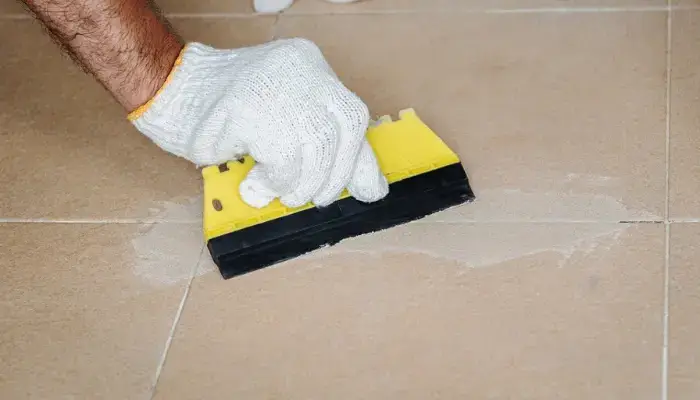
With a popsicle stick, scoop up roughly half the epoxy mixture that you made. To completely cover the fracture, use a thin coat of epoxy. Before it solidifies, the liquid will gradually travel through the fissure. The epoxy should be evenly applied on both sides of the fracture, at a distance of 1/2 cm (0.20″). Due of how quickly epoxy dries, move swiftly.
Avoid covering the remaining tile with epoxy.
4. Give the epoxy five to ten minutes to dry.
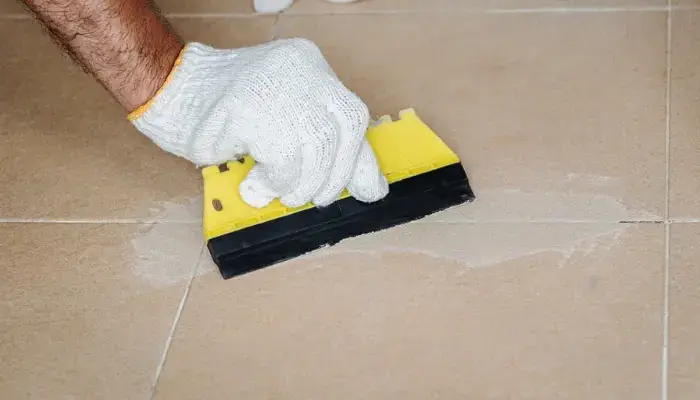
The epoxy dries entirely in within fifteen minutes. Use your finger to test the epoxy to determine whether it has dried. It becomes stiff to the touch once it has fully dried. After touching the epoxy, your finger doesn’t adhere to it at all.
Avoid touching or applying anything to the epoxy while it is drying. Pets and children should not be around it at that time.
5. Trim the excess dried epoxy near the crack.
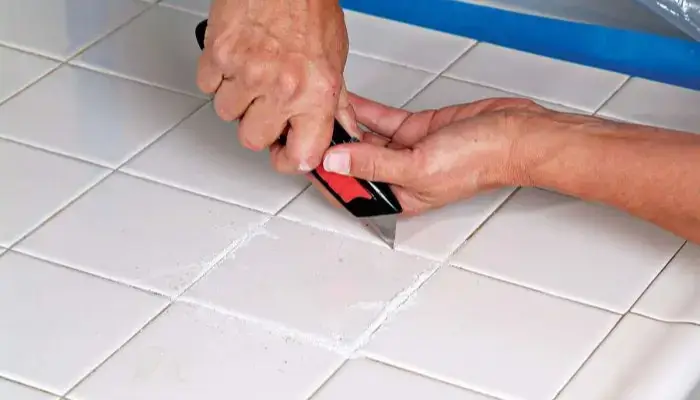
Scratching the tile with a razor blade’s sharp edge may help you remove any epoxy that may have found a small spot to stick to the tile. You must hold the blade diagonally and at a 45-degree angle to the tile’s surface in order to scrape off the epoxy. To get rid of the extra epoxy, slide the blade below.
Cut the epoxy with a razor blade with care. He has a bright mind. You risk injury if the blade unintentionally slides.
6. Lightly paint the epoxy to match your tile.
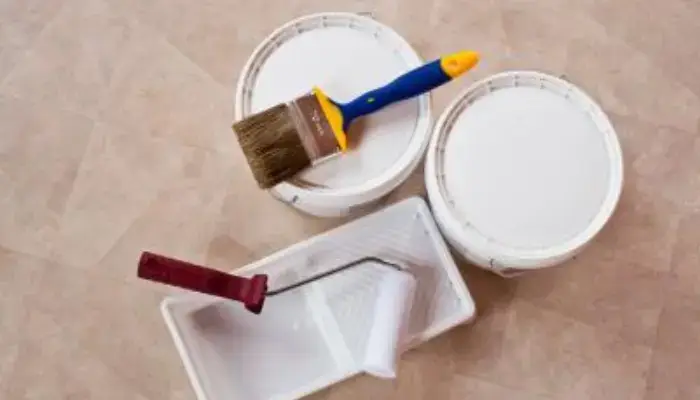
A powder dye (a particular dye created for colouring epoxy) is available from a craft or hobby shop. To make a colour that complements your tiles, combine several coloured powders (such as brown, grey, and black). As directed by the manufacturer, sprinkle the colour powder over the epoxy until the mended cracks are concealed and no longer noticeable.
This action is not required. You can leave it alone if the epoxy’s hue is fairly close to that of the tiles.
Required tools and materials
- 2-part epoxy kit or acrylic putty repair kit
- Rubbing alcohol or oxiclean stain remover
- Soft-bristled brush or toothbrush
- Cotton cloth or Paper towels
- Popsicle stick or applicator
- Cardboard sheet or Hard fiber sheet
- Latex gloves
- Matching color
Benefits of Ceramic Tile Repair Kit
An excellent approach to fix broken tiles without having to replace the entire tile is with a ceramic tile repair kit. All the equipment you will need to complete the repair, including glue, grout, and sealer, are included in one kit. The best aspect is that it’s a simple procedure that anyone can complete with a little guidance.
Instead of completely replacing the tile, there are many advantages to using a ceramic tile repair kit. First, it is far less expensive than purchasing brand-new tiles. The trouble of removing and repairing the broken tile is avoided, secondly.
Third, once the repair is finished, it is typically undetectable. Finally, it’s a fantastic option to recycle your old tile and stay away from the garbage.
If your home has ceramic tile, you are aware of how difficult it can be to keep clean. In addition to dirt and dust building up on the surface, tiles that have cracks or chips in them may also become discolored and ugly very rapidly. You may correct these issues and return your tile’s beauty to it by using a ceramic tile repair kit.
You may repair cracks, chips, and other damage to your ceramic tile using a repair kit. The kit often contains a filler material, adhesive, and instructions, as well as anything else you need to do the repair. The best kits also include a sanding block and a sealant of some sort to guard the repaired area from further harm.
A Ceramic Tile Repair Kit is an excellent choice for you if you have multiple damaged tiles or if you just want to maintain your tile investment. By using a kit, you can avoid having to completely replace your tile and save money on pricey repairs.
Before making your purchase, you may always get advice from a specialist if you’re not sure if a Ceramic Tile Repair Kit is the best option for you.
reasons why tile floors crack?
1. A Large Item Was Dropped
If the crack just affects a single spot (or perhaps one tile), something heavy was probably dropped and caused the damage.
Consider the last time you had the opportunity to drop something substantial. Was it a piece of furniture, a plate, or a ceramic bowl you were bringing in through the door? The bathroom’s iron, perhaps? When attempting to wash a cast-iron pot, did you unintentionally drop it?
All of these things might only initially appear to have a little dent, but if the region is subjected to persistent pressure, such as regular foot traffic, the damage may eventually become more noticeable.
2. Inferior Tile
It’s understandable to fear that the tile you purchased is of poor quality if you have recently invested in new tile flooring. Homeowners may thankfully rely on home improvement shops and other retail outlets to adhere to ANSI and ASTM testing standards.
You can rely on your tiles to be made of high-quality materials as a result. We advise staying away from a certain brand if you see that a tile is not up to ANSI and ASTM standards.
Superior tiles won’t endure as long as authorized tiles. At first appearance, the material’s durability might appear to be adequate, but with repeated use, it might chip and break more quickly. Make sure to ask your tile supplier what the greatest choice is for your house.
3. Heavy Stationary Loads
We frequently receive inquiries regarding the possibility of heavy appliances cracking tile as an experienced tile flooring installer. The majority of residential tiles meet ASTM C648 Breaking Strength requirements. The test ensures that your tile can withstand pressure of up to 250 pounds per square inch.
When compared to a side-by-side refrigerator that occupies 22 cubic feet but only generates 75 pounds of pressure per square inch, this is a lot of pressure. Despite the possibility, it is uncommon for tile floors to break when subjected to large loads.
4. Installed Over a Control Joint
Most homeowners believe that the tile itself is to blame when the tiling becomes broken. The tile flooring you walk on is only one layer of a sandwich of flooring, as any flooring repair professional can attest.
Control joints are utilized to ensure that the concrete beneath will crack in a predictable, straight path since the concrete beneath is prone to cracking. Because of this, your contractor should never lay tile over a fissure that they are aware would soon appear.
5. Installed on Improperly Spaced Joists
Your flooring’s lowest layer, the joists, is in charge of supporting everything above it. The sub floor, underpayment, tiles, people, furniture, and everything else are all included in this.
The tile flooring won’t have anything underneath it to sustain all that weight, though, if your contractor places the joists too widely apart. The effect will be that the tiles begin to bend and eventually crack.
6. Cracks in Concrete Substrate
The concrete beneath the tiles may have broken if you see a fissure that crosses several of them. We advise you to request that your contractor use a crack isolation membrane while installing tile flooring in order to stop cracks from developing in the first place.
7. Concrete Substrate Did Not Cure Long Enough
Concrete must initially cure after pouring so that all of the water can evaporate. The concrete then shrinks once all the water has evaporated.
The Tile Council of America advises allowing fresh concrete to cure for a minimum of 28 days and ideally longer. Your tile floor is more prone to develop cracks in freshly poured concrete that wasn’t given enough time to cure.
How To Determine The Quality Of ceramic Floor Tile?
Any renovation’s tile selection process can be both exhilarating and intimidating. Even if ceramic floor tiles are what you want, the variety of colors, shapes, and sizes can bewilder even the most devoted buyer. Furthermore, it can be difficult to assess the tile’s quality.
Finding the right ceramic floor tile for your intended application is the first step in choosing the design. Thanks to testing and classification, ceramic tile can be identified as being of a certain quality by selecting the appropriate Porcelain Enamel Institute (PEI) grade, water absorption, friction, and frost ratings.
fAQ about how to repair cracks on floor tile?
Can I easily replace a cracked tile?
You usually can! Just scrape out the grout around the tile and use a hammer and chisel to break the old one out. After that, you can apply mortar to the new tile and press it into place. Don’t forget to fill in the gap with new grout.
HOW To Check Quality Of Ceramic Tiles Before Buying?
All ceramic tiles must have the same color and texture. The patterns and designs may vary, as specified.
The size of each tile must be perfectly square or rectangular with straight edges and uniform thickness.
The top finishing and glazing must be smooth and free of cracks, holes and scratches.
You may also scratch the surface of a ceramic tile to ensure it is of good quality.
how to check tile alignment?
To do so, measure the four walls in the room to find and mark the midpoint. Then, use two chalk lines to mark the alignment by snapping one from the midpoint of two opposite walls and the other from the midpoint of the other two walls. The intersection of the chalk lines will give you the center point of the room.
Tell Us In The Comments Your Opinion how to repair cracks on floor tile?
Additionally, don’t forget to read the other post on ideas for making house, which will definitely provide you with an insightful and helpful perspective.
